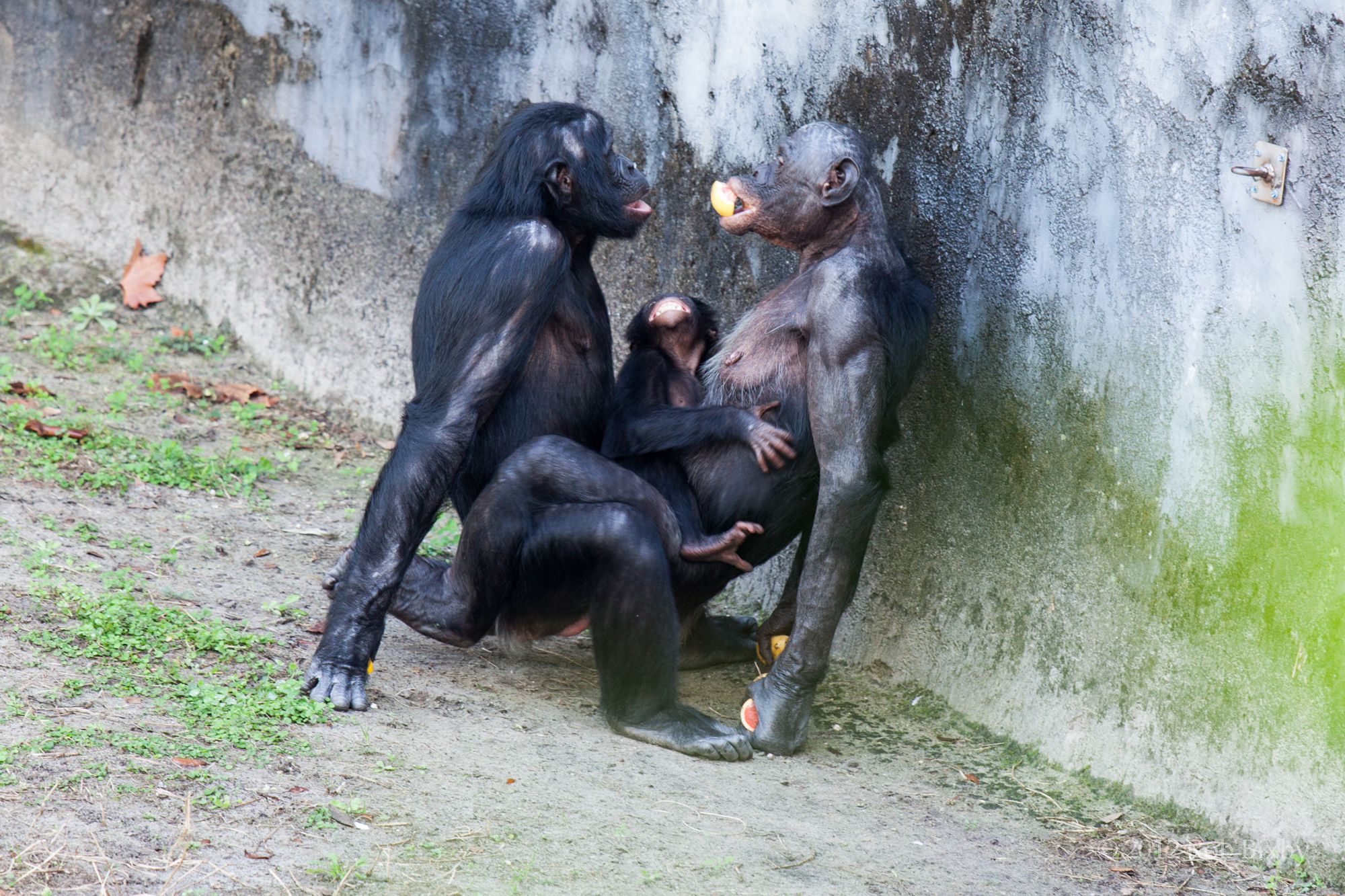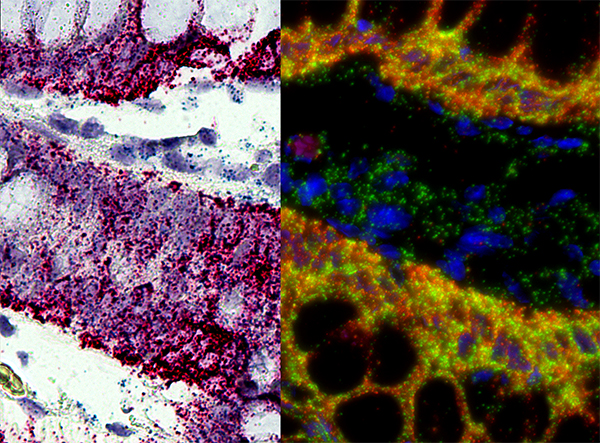|
Sexually Dimorphic Nucleus
The sexually dimorphic nucleus (SDN) is an ovoid, densely packed cluster of large cells located in the medial preoptic area (POA) of the hypothalamus which is believed to be related to sexual behavior in animals. Thus far, for all species of mammals investigated, the SDN has been repeatedly found to be considerably larger in males than in females. In humans, the volume of the SDN has been found to be 2.2 times as large in males as in females and to contain 2.1 times as many cells. The human SDN is elongated in females and more spherical in males. No sex differences have been observed in the human SDN in either cell density or mean diameter of the cell nuclei. The volume and cell number of the human SDN considerably decreases with age, although the decrease in cell number is both sex and age-specific. In males, a substantial decrease in the cell number of the human SDN was observed between the age of 50–60 years. Cell death was more common in females than males, especially amo ... [...More Info...] [...Related Items...] OR: [Wikipedia] [Google] [Baidu] |
Preoptic Area
The preoptic area is a region of the hypothalamus. MeSH classifies it as part of the anterior hypothalamus. TA lists four nuclei in this region, (medial, median, lateral, and periventricular). Functions The preoptic area is responsible for thermoregulation and receives nervous stimulation from thermoreceptors in the skin, mucous membranes, and hypothalamus itself. Nuclei Median preoptic nucleus The median preoptic nucleus is located along the midline in a position significantly dorsal to the other three preoptic nuclei, at least in the crab-eating macaque brain. It wraps around the top (dorsal), front, and bottom (ventral) surfaces of the anterior commissure. The median preoptic nucleus generates thirst. Drinking decreases noradrenaline release in the median preoptic nucleus. Medial preoptic nucleus The medial preoptic nucleus is bounded laterally by the lateral preoptic nucleus, and medially by the preoptic periventricular nucleus. It releases gonadotropin-releasing ... [...More Info...] [...Related Items...] OR: [Wikipedia] [Google] [Baidu] |
Sheep
Sheep (: sheep) or domestic sheep (''Ovis aries'') are a domesticated, ruminant mammal typically kept as livestock. Although the term ''sheep'' can apply to other species in the genus '' Ovis'', in everyday usage it almost always refers to domesticated sheep. Like all ruminants, sheep are members of the order Artiodactyla, the even-toed ungulates. Numbering a little over one billion, domestic sheep are also the most numerous species of sheep. An adult female is referred to as a ''ewe'' ( ), an intact male as a ''ram'', occasionally a ''tup'', a castrated male as a ''wether'', and a young sheep as a ''lamb''. Sheep are most likely descended from the wild mouflon of Europe and Asia, with Iran being a geographic envelope of the domestication center. One of the earliest animals to be domesticated for agricultural purposes, sheep are raised for fleeces, meat ( lamb, hogget or mutton), and milk. A sheep's wool is the most widely used animal fiber, and is usually harvested by ... [...More Info...] [...Related Items...] OR: [Wikipedia] [Google] [Baidu] |
Hippocampal
The hippocampus (: hippocampi; via Latin from Greek , 'seahorse'), also hippocampus proper, is a major component of the brain of humans and many other vertebrates. In the human brain the hippocampus, the dentate gyrus, and the subiculum are components of the hippocampal formation located in the limbic system. The hippocampus plays important roles in the consolidation of information from short-term memory to long-term memory, and in spatial memory that enables navigation. In humans, and other primates the hippocampus is located in the archicortex, one of the three regions of allocortex, in each hemisphere with direct neural projections to, and reciprocal indirect projections from the neocortex. The hippocampus, as the medial pallium, is a structure found in all vertebrates. In Alzheimer's disease (and other forms of dementia), the hippocampus is one of the first regions of the brain to be damaged; short-term memory loss and disorientation are included among the e ... [...More Info...] [...Related Items...] OR: [Wikipedia] [Google] [Baidu] |
Suprachiasmatic Nucleus
The suprachiasmatic nucleus or nuclei (SCN) is a small region of the brain in the hypothalamus, situated directly above the optic chiasm. It is responsible for regulating sleep cycles in animals. Reception of light inputs from photosensitive retinal ganglion cells allow it to coordinate the subordinate cellular clocks of the body and entrain to the environment. The neuronal and hormonal activities it generates regulate many different body functions in an approximately 24-hour cycle. The SCN also interacts with many other regions of the brain. It contains several cell types, neurotransmitters and peptides, including vasopressin and vasoactive intestinal peptide. Disruptions or damage to the SCN has been associated with different mood disorders and sleep disorders, suggesting the significance of the SCN in regulating circadian timing. Neuroanatomy The SCN is situated in the anterior part of the hypothalamus immediately dorsal, or ''superior'' (hence supra) to the optic c ... [...More Info...] [...Related Items...] OR: [Wikipedia] [Google] [Baidu] |
Neuron
A neuron (American English), neurone (British English), or nerve cell, is an membrane potential#Cell excitability, excitable cell (biology), cell that fires electric signals called action potentials across a neural network (biology), neural network in the nervous system. They are located in the nervous system and help to receive and conduct impulses. Neurons communicate with other cells via synapses, which are specialized connections that commonly use minute amounts of chemical neurotransmitters to pass the electric signal from the presynaptic neuron to the target cell through the synaptic gap. Neurons are the main components of nervous tissue in all Animalia, animals except sponges and placozoans. Plants and fungi do not have nerve cells. Molecular evidence suggests that the ability to generate electric signals first appeared in evolution some 700 to 800 million years ago, during the Tonian period. Predecessors of neurons were the peptidergic secretory cells. They eventually ga ... [...More Info...] [...Related Items...] OR: [Wikipedia] [Google] [Baidu] |
Homosexual Men
Gay men are male homosexuals. Some bisexual men, bisexual and homoromantic men may dually identify as ''gay'' and a number of gay men also identify as ''queer''. Historic terminology for gay men has included ''Sexual inversion (sexology), inverts'' and ''Uranian (sexology), uranians''. Gay men continue to face significant Discrimination against gay men, discrimination in LGBT rights by country or territory, large parts of the world, particularly in most of LGBT rights in Asia, Asia and LGBT rights in Africa, Africa. In the LGBT rights in the United States, United States and the western world, many gay men still experience discrimination in their daily lives, though some openly gay men have reached national success and prominence, including Apple Inc., Apple CEO Tim Cook and heads of state or government such as Edgars Rinkēvičs (president of Latvia since 2023). The word ''gay'' is recommended by LGBTQ groups and style guides to describe all people exclusively attracted to m ... [...More Info...] [...Related Items...] OR: [Wikipedia] [Google] [Baidu] |
Pelvic Thrusting
The pelvic thrust is the thrusting motion of the pelvic region, which is used for a variety of activities, such as dance, exercise, or sexual activity. Sexual activity The pelvic thrust is used during copulation by many species of mammals, including humans, or for other sexual activities (such as non-penetrative sex). In 2007, German scientists noted that female monkeys could increase the vigor and number of pelvic thrusts made by the male by shouting during intercourse. In whitetail deer, copulation consists of a single pelvic thrust. Dance One of the first to perform this move on stage was Elvis Presley. It was quite controversial due to its obvious sexual connotations. Due to this controversy, he was sometimes shown (as seen on his third appearance on ''The Ed Sullivan Show'') from the waist up on TV. Later, the pelvic thrust also became one of the signature moves of Michael Jackson. It is also mentioned in " Time Warp", a song from ''The Rocky Horror Show'', as a par ... [...More Info...] [...Related Items...] OR: [Wikipedia] [Google] [Baidu] |
Japanese Macaque
The Japanese macaque (''Macaca fuscata''), also known as the snow monkey, is a terrestrial Old World monkey species that is native to Japan. Colloquially, they are referred to as "snow monkeys" because some live in areas where snow covers the ground for months each year – no other non-human primate lives farther north, nor in a colder climate. Individuals have brownish grey fur, pinkish-red faces, and short tails. Two subspecies are known. In Japan, the species is known as ''Nihonzaru'' (ニホンザル, a combination of ''Nihon'' 日本 "Japan" + ''saru'' 猿 "monkey") to distinguish it from other primates, but the Japanese macaque is very familiar in Japan—as it is the only species of monkey in Japan—so when Japanese people simply say ''saru'', they usually have the Japanese macaque in mind. Physical characteristics The Japanese macaque is sexual dimorphism, sexually dimorphic. Males weigh on average , while females average .Fooden J, Aimi M. (2005) "Systematic revie ... [...More Info...] [...Related Items...] OR: [Wikipedia] [Google] [Baidu] |
Ferret
The ferret (''Mustela furo'') is a small, domesticated species belonging to the family Mustelidae. The ferret is most likely a domesticated form of the wild European polecat (''Mustela putorius''), as evidenced by the ferret's ability to interbreed with European polecats and produce hybrid offspring. Physically, ferrets resemble other mustelids because of their long, slender bodies. Including their tail, the average length of a ferret is about ; they weigh between ; and their fur can be black, brown, white, or a mixture of those colours. The species is sexually dimorphic, with males being considerably larger than females. Ferrets may have been domesticated since ancient times, but there is widespread disagreement because of the sparseness of written accounts and the inconsistency of those which survive. Contemporary scholarship agrees that ferrets were bred for sport, hunting rabbits in a practice known as rabbiting. In North America, the ferret has become an increasingly pro ... [...More Info...] [...Related Items...] OR: [Wikipedia] [Google] [Baidu] |
MRNA
In molecular biology, messenger ribonucleic acid (mRNA) is a single-stranded molecule of RNA that corresponds to the genetic sequence of a gene, and is read by a ribosome in the process of Protein biosynthesis, synthesizing a protein. mRNA is created during the process of Transcription (biology), transcription, where an enzyme (RNA polymerase) converts the gene into primary transcript mRNA (also known as pre-mRNA). This pre-mRNA usually still contains introns, regions that will not go on to code for the final amino acid sequence. These are removed in the process of RNA splicing, leaving only exons, regions that will encode the protein. This exon sequence constitutes mature mRNA. Mature mRNA is then read by the ribosome, and the ribosome creates the protein utilizing amino acids carried by transfer RNA (tRNA). This process is known as Translation (biology), translation. All of these processes form part of the central dogma of molecular biology, which describes the flow of geneti ... [...More Info...] [...Related Items...] OR: [Wikipedia] [Google] [Baidu] |
In Situ Hybridization
''In situ'' hybridization (ISH) is a type of Hybridisation (molecular biology), hybridization that uses a labeled complementary DNA, RNA or modified nucleic acid strand (i.e., a Hybridization probe, probe) to localize a specific DNA or RNA sequence in a portion or section of tissue (biology), tissue (''in situ'') or if the tissue is small enough (e.g., plant seeds, ''Drosophila'' embryos), in the entire tissue (whole mount ISH), in cells, and in circulating tumor cells (CTCs). This is distinct from immunohistochemistry, which usually localizes proteins in tissue sections. In situ hybridization is used to reveal the location of specific nucleic acid sequences on chromosomes or in tissues, a crucial step for understanding the organization, regulation, and function of genes. The key techniques currently in use include ''in situ'' hybridization to mRNA with oligonucleotide and RNA probes (both radio-labeled and hapten-labeled), analysis with light and electron microscopes, whole mo ... [...More Info...] [...Related Items...] OR: [Wikipedia] [Google] [Baidu] |






